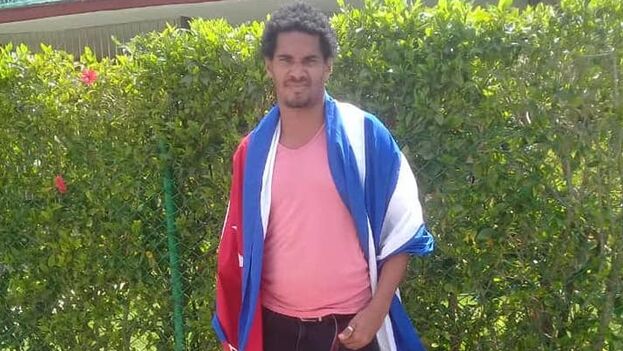
![]() 14ymedio, Yoani Sanchez, Generation Y, Havana, 11 March 2020 — Seventeen years ago, while the world was focused on watching the invasion of Iraq, the Cuban regime took advantage of the distraction to strike the repressive coup that came to be called the Black Spring. This March, as the international media dedicates its headlines to the coronavirus, the Plaza of the Revolution is tightening the screws of control. The most visible face of these new raids is the artist Luis Manuel Otero Alcántara, who has been imprisoned since Sunday March 1st for two alleged crimes, one of insult against the national symbols and the other of property damage.
14ymedio, Yoani Sanchez, Generation Y, Havana, 11 March 2020 — Seventeen years ago, while the world was focused on watching the invasion of Iraq, the Cuban regime took advantage of the distraction to strike the repressive coup that came to be called the Black Spring. This March, as the international media dedicates its headlines to the coronavirus, the Plaza of the Revolution is tightening the screws of control. The most visible face of these new raids is the artist Luis Manuel Otero Alcántara, who has been imprisoned since Sunday March 1st for two alleged crimes, one of insult against the national symbols and the other of property damage.
Otero Alcántara creates a type of irreverent and social art that annoys the officialdom. The protest for the elimination of the bust of a communist leader to inaugurate a luxurious hotel in its place, also recalls in one of its installations the cache of weapons that Havana tried to pass through the Panama Canal bound for North Korea. A resident of San Isidro, one of the poorest areas of the Cuban capital, this artist born in 1987 has become the stone in the shoe of the stagnant Cuban Government.
The discomfort caused by Otero Alcántara among the island’s nomenklatura has several causes. He comes from a poor family, is mixed race and was born within the Revolutionary process. The authorities find it disturbing that, after having received a ‘free education and healthcare,’ as the official propaganda wearily repeats, he chooses not to applaud but to question.
To make matters worse, with his art he disassembles and desacralizes power by speaking to them on familiar and personal terms. They also reject his universal gaze, his successful use of new technologies, which have helped him to disseminate his actions, and his social commitment that places him in the uncomfortable category of artivist.
However, what Castroism is particularly bothered by is the crosscutting nature of Otero Alcántara, who has successfully included in his works the LGBTI agenda, the defense of animals, urban music, alternative literature, dissident postulates, the relationship between Cuba and the United States, the pains of exile, the rescue — beyond ideology — of national symbols, and criticism of Fidel Castro’s personal excesses. Irony, sarcasm and questioning mark his work with a freshness and spontaneity that many of those other creators – the ‘official’ ones from the gallery and catalog – have given up, preferring not to inconvenience power but rather to dedicate themselves to selling their art without getting into trouble.
For using the Cuban flag in several of his installations and performances, Otero Alcántara will be tried in a context in which police citations against activists are increasing, are arbitrary arrests and the violation of independent journalists’ freedom of movement. Probably in its heated offices the Communist Party is planning to make this trial an exemplary action that will permeate the whole of society, spurred on by the shortages, the inefficiency of the system and the dysfunctionality of the institutions. In response to the lack of bread, fear.
As in March 2003, the Cuban regime hopes to take advantage of global distraction to deal a further blow to citizen liberties. The Black Spring returns, but it remains to be seen how we are going to react to it now.
________________________
This text was originally published by Deustche Welle’s Latin America page.
COLLABORATE WITH OUR WORK: The 14ymedio team is committed to practicing serious journalism that reflects Cuba’s reality in all its depth. Thank you for joining us on this long journey. We invite you to continue supporting us by becoming a member of 14ymedio now. Together we can continue transforming journalism in Cuba.
